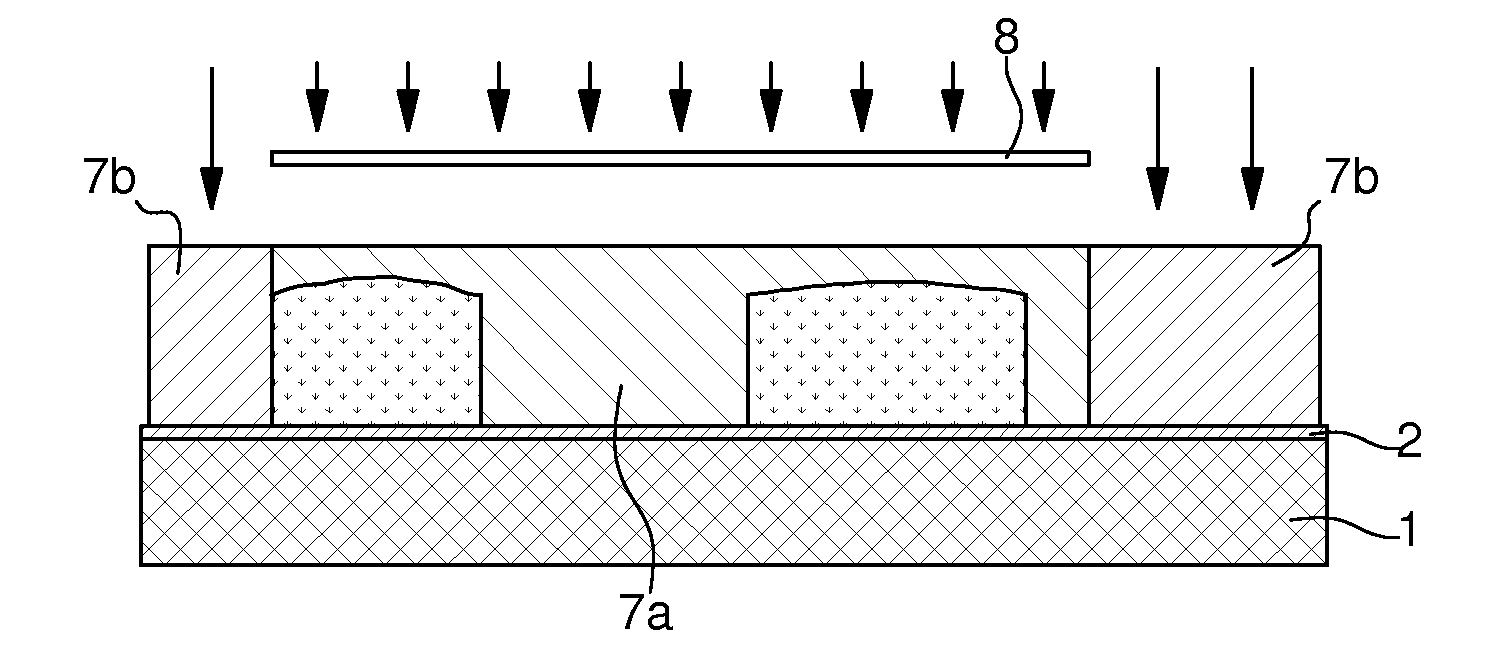Heterogeneous liga method
a technology of heterogeneous liga and metal parts, applied in the field of metal parts fabrication, can solve the problems of inability to meet the requirements of mass production of microstructures that must have a low unitary cost, not always optimal, and significantly limits the choice of microstructure shap
- Summary
- Abstract
- Description
- Claims
- Application Information
AI Technical Summary
Benefits of technology
Problems solved by technology
Method used
Image
Examples
Embodiment Construction
[0039]According to the present invention, the method includes the step of taking a substrate that has a conductive surface. In the particular implementation illustrated in the Figures, substrate 1 is formed by a silicon, glass, or ceramic wafer on which a conductive layer 2 (FIG. 1) has been previously deposited by vacuum plating. This conductive layer 2 is intended to act as a strike layer, i.e. a cathode, during a subsequent galvanic deposition. Typically, strike layer 2 can be formed of a sub-layer of chromium or titanium coated with a gold or copper layer.
[0040]According to a variant that is not shown, to facilitate the subsequent separation of the part from the substrate, a layer with a low degree of cohesion or adherence with the other layers is first of all deposited on the substrate. This layer, called the sacrificial layer, can easily be broken, so as to enable the multi-level metal structure to be separated from the substrate at the end of the method. The sacrificial layer...
PUM
| Property | Measurement | Unit |
|---|---|---|
| Electrical conductor | aaaaa | aaaaa |
| Microstructure | aaaaa | aaaaa |
| Photosensitivity | aaaaa | aaaaa |
Abstract
Description
Claims
Application Information
 Login to View More
Login to View More - R&D
- Intellectual Property
- Life Sciences
- Materials
- Tech Scout
- Unparalleled Data Quality
- Higher Quality Content
- 60% Fewer Hallucinations
Browse by: Latest US Patents, China's latest patents, Technical Efficacy Thesaurus, Application Domain, Technology Topic, Popular Technical Reports.
© 2025 PatSnap. All rights reserved.Legal|Privacy policy|Modern Slavery Act Transparency Statement|Sitemap|About US| Contact US: help@patsnap.com



